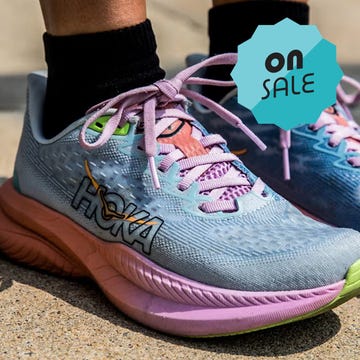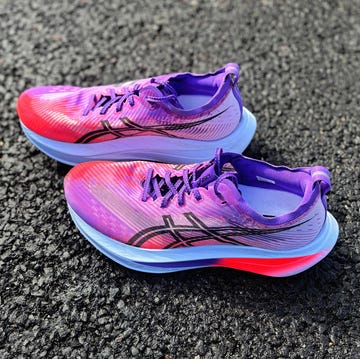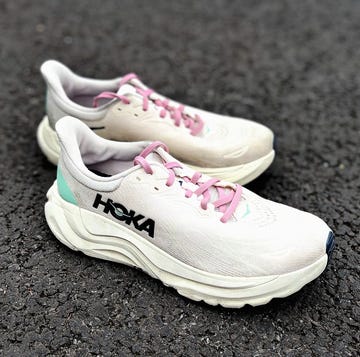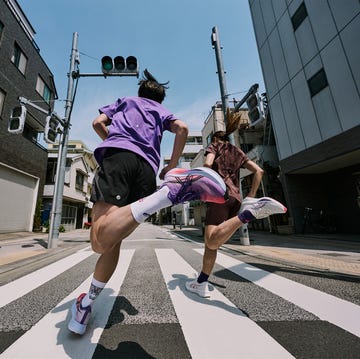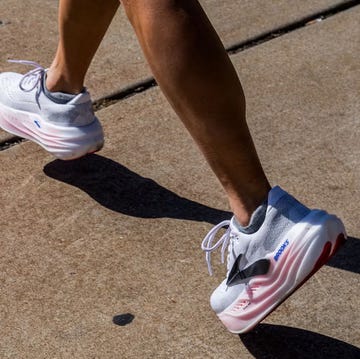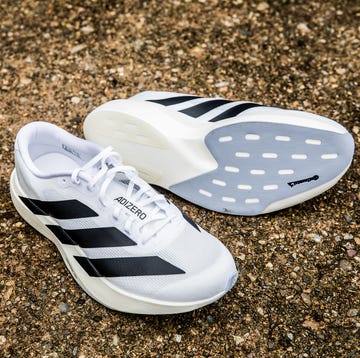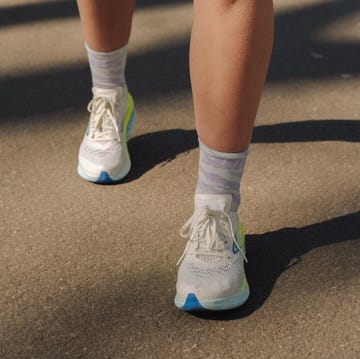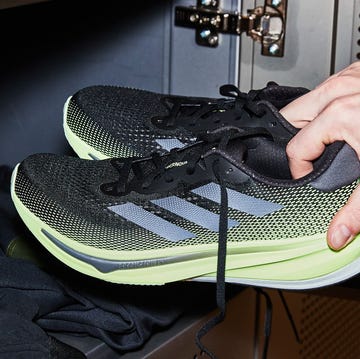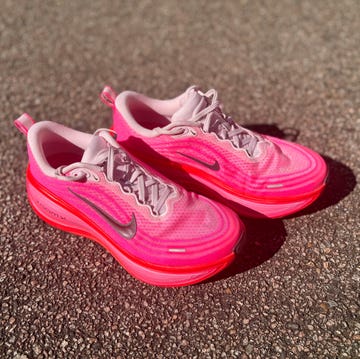- Weight: 295g (UK size 8.5)
- Stack height: 37mm (heel), 27mm (forefoot)
- Heel-to-toe drop: 10mm
- Type: Neutral
- Who it's best for: Larger runners or those seeking a high-stack recovery shoe
- Midsole foam: PWRUN PB
The shoe
The Saucony Triumph has previously been a popular shoe among beginners and experienced runners alike, thanks to its versatility across different types of runs – easy, long, tempo, you name it. In fact, we’d describe the Triumph 21 as an ideal holiday shoe – one you might pack for a trip when you only have space for a single pair.
So, how does the Triumph 22 fair in comparison? To cut straight to it, not amazingly. It’s still a very cushioned trainer that’s suited to slow, easy runs – but that’s about it. Upgrades to the foam (more on this) seem to have actually reversed the Triumph’s versatility, creating a shoe that is significantly slower than previous versions. But let’s get into things fully below.
Saucony Triumph 21 vs Triumph 22
The biggest update from the Triumph 21 to the 22 has been to the midsole foam. And in my experience as a shoe tester, this is usually the thing that determines whether an update is a roaring success or has cult-followers up in arms. Most brands use a different foam in their racing shoes compared with their daily trainers – Adidas has Dreamstrike+ in its dailies and Lightstrike Pro in its racers, for example, while New Balance has Fresh Foam X in its dailies and FuelCell in its racers. And previously, Saucony has followed the same formula, with PWRUN+ in its daily trainers and PWRUN PB in its top-end racers.
What everyone's reading
With the Triumph 22, however, we have a new PWRUN PB midsole – this is a PEBA-based blend that should, theoretically, provide better energy return. While the stack height remains the same as the v21, the heel, midfoot and forefoot are all much wider, with changes to the upper and outsole, too.
How does the Saucony Triumph 22 fit?
I got the Triumph in my regular running shoe size (UK 8.5) and it fits true to size. The heel collar and tongue are well padded – plus the tongue scores points for being gusseted, though it lacks some breathability.
The engineered mesh upper, while premium-feeling, isn’t the most breathable construction either. What's more, despite having normal to wide-ish feet, I've found I really have to synch the laces in to get a good fit. Even then, I don't think I've been able to achieve the precise lockdown I want and, as a result, feel like my heels have been slipping slightly. If you've got wide feet, I think you'd get on fine with this shoe. Those with narrow feet, look elsewhere.
What’s the Saucony Triumph 22 like to run in?
Let’s start with something positive: the Triumph 22 is certainly comfortable and protective underfoot and if you're looking for something you can plod about in at an easy pace, it will serve you well, especially for recovery runs.
Unfortunately, Saucony’s promise of a ‘responsive running shoe that adds a pep to your step’ falls flat. The shoe lacks versatility, with no real sense of pop or bounce, and the wider heel, forefoot and midfoot make it too bulky for my liking.
Saucony's decision to use the PWRUN PB midsole foam also feels odd to me. It gives the Triumph a firmer ride than the previous iteration — comfortable, yes, but not soft — yet it lacks responsiveness. This could be down to the addition of an Ortholite sock liner, which is perhaps preventing you from getting the most out of that responsive PEBA foam beneath it.
As a result, I'm no longer sure where the Triumph sits in Saucony's line-up. It's not an energetic daily trainer, but it's not a traditional super max-cushioned shoe either (like the New Balance More v4 or Hoka Bondi 8). Has the Triumph lost its way? Maybe.
RW verdict
Saucony has released some awesome running shoes in the past year. The Ride 17 and Endorphin Speed 4 both featured in our 2024 Shoe Awards, and the Guide 17 has been popular among the overpronators in our test team. But I can’t help but feel disappointed by the Triumph 22.
Sure, it’s a comfortable and stable shoe, but it’s not particularly versatile or bouncy, and overall it’s too sturdy and thick for my liking. Outside of testing, it’s not a shoe I’ve found myself reaching for, or one I've been particularly excited about wearing — except perhaps when I've had very fatigued legs.
If you're after versatility, you're much better off saving yourself the extra £35 and opting for the Ride 17 instead. Or, if you do want that max-stacked cushioning, the New Balance 1080 v13 or Asics Gel-Nimbus 26 are good options that offer slightly more responsiveness along with an abundance of comfort.






